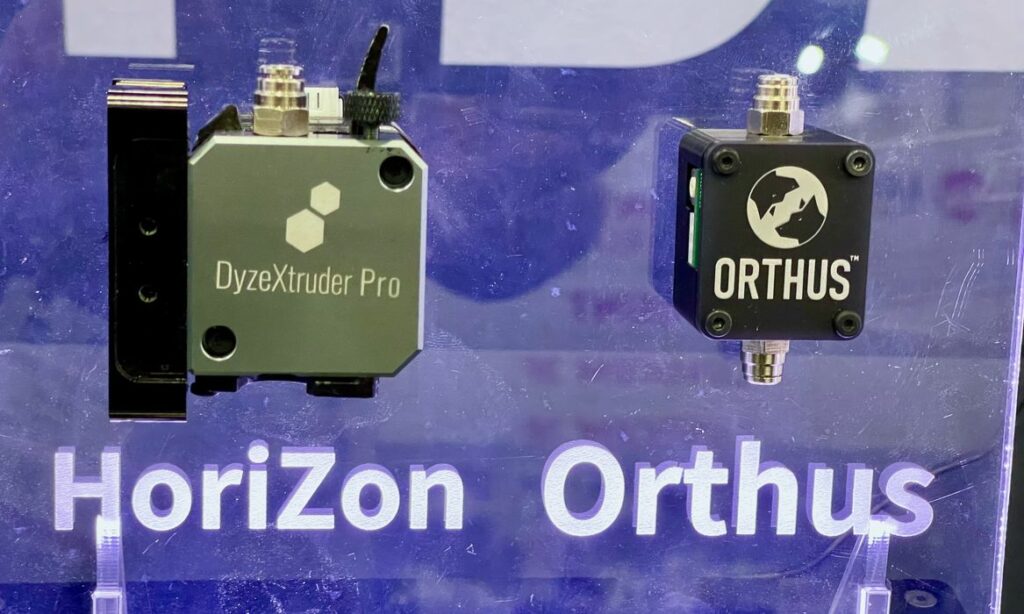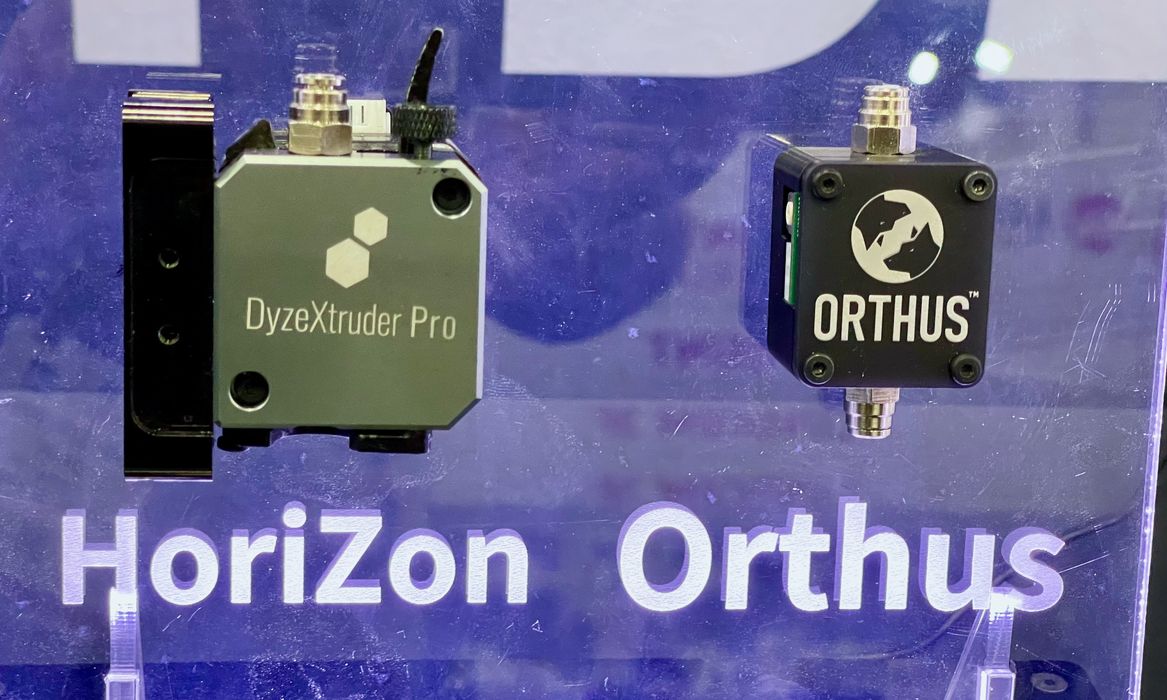
Dyze Design has some interesting new hardware.
The Montreal company is well-known for their powerful extruders and hot ends, but their latest innovations are neither extruders nor hot ends.
One product is the Orthus. It’s a very straightforward appearing component that has two ports for a filament to pass through. It’s a filament sensor, but one that is more sophisticated than the previous product, the Sentinel.
The Sentinel would detect the presence of filament and be able to trigger the 3D printer’s firmware to take action, such as pausing the print and requesting more filament. But the new Orthus can not only do that but also detect the speed of the filament.
How does it work? It uses a magnetic approach to generate pulses proportional to the speed of the filament passing through. This information can be collected by the 3D printer’s firmware to take action.
Of course a filament speed of “zero” would indicate a complete jam, but knowing the speed would enable the firmware to, for example, detect underextrusion, a common problem.
While a traditional filament sensor might tell you when the filament has broken and save you from wasting time on the machine, the ability to detect underextrusion could detect failing prints before they complete, and even be considered a form of quality control if used appropriately.
Dyze Design hopes to get the Orthus on the market before the end of the year, and their pricing is to be similar to the current Sentinel system.
The other piece of hardware from Dyze Design is the upcoming HoriZon sensor. The uppercase “Z” gives away the purpose of the sensor.
This gadget is attached to the print head, between the motion carriage and the extruder, and acts as a pressure sensor.
In other words, when the nozzle touches the print surface, pressure is created and the HoriZon will sense this. It’s a force transducer.
This, as you may have guessed, is a new method that could replace magnetic or touch sensors used to implement automated leveling procedures. Many DIY 3D printer operators install a BL Touch sensor for this purpose, but here it would be possible to install a HoriZon instead.
Dyze Design is to make available several mounting plates that match common extruder types, making it relatively easy for most 3D printer operators. However, it would also be possible to develop custom mounting plates for more unusual devices, should one wish to install the HoriZon.
While many 3D printer operators may not have interest in modifying their equipment, there are quite a few that do, and these new components from Dyze Design could be just what they need.
Via Dyze Design

